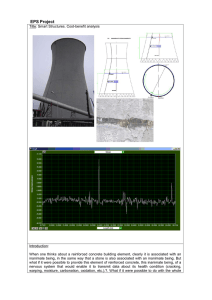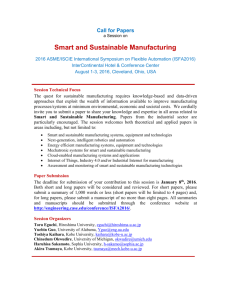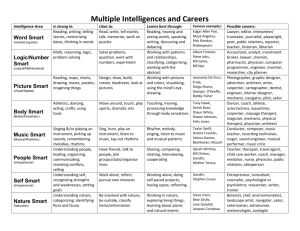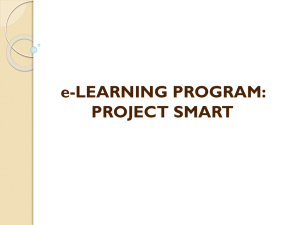1B-0830-BIRCH - National Town Meeting on Demand Response
advertisement
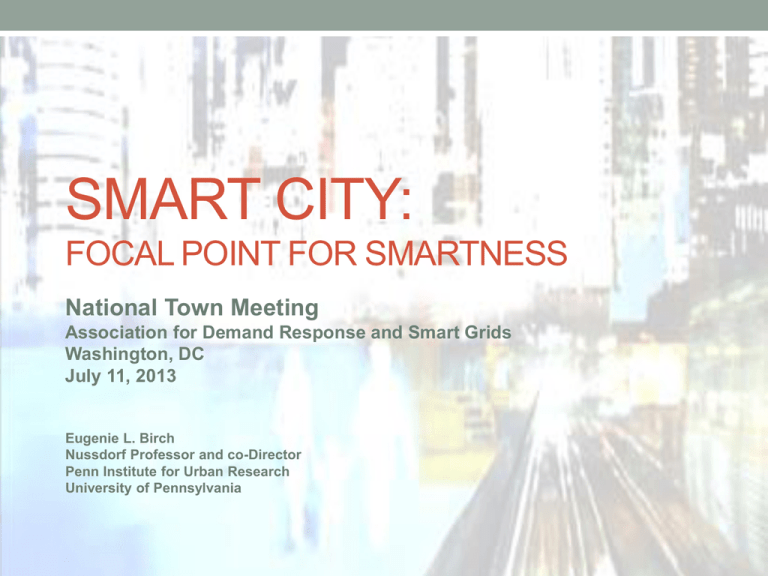
SMART CITY: FOCAL POINT FOR SMARTNESS National Town Meeting Association for Demand Response and Smart Grids Washington, DC July 11, 2013 Eugenie L. Birch Nussdorf Professor and co-Director Penn Institute for Urban Research University of Pennsylvania Today’s Talk • The “what, when, why, where, who and how ” questions of “Smart Cities” Some examples: Smart Buildings, Smart Transport, Smart Energy/Transport “what, when, why, where, who and how” A “Smart City” employs advanced technology, innovative land use decisionmaking and strategic public/private partnerships to achieve efficient, stable, resilient and equitable provisions for its inhabitants and their economic, social and environmental well-being. “what, when, why, where, who and how” “what, when, why, where, who and how” Reduce environmental impact/ GHG emissions Encourage economic development Deliver improvements in citizen services “what, when, why, where, who and how” North America: Energy (30%) Transport (22%) Buildings (7%) Europe: Energy (34%) Transport (27%) Buildings (9%) Asia: Energy (16%) Transport (23%) Buildings (32%) Note: All regions report ¼+ of all efforts in government “what, when, why, where, who and how” Private Sector Schneider, IBM, Oracle, Siemens, invensys, Cisco, Thales Public Sector Arhus, Amsterdam, Cairo, Dubai, Edinburgh, Malaga, Barcelona, Songdo Yokohama NGOs European Union Smart Cities Stakeholder Platform, Meeting of the Minds, MESH Cities Transport: Types of Vehicles Experimental Efforts Berlin, Germany Victoria, Australia Issues/ Minimum Conditions Market Considerations • Vehicles (EVs • Sufficient production • Range • Cost Infrastructure Requirements • Charging Infrastructure • Standards/compatibility (physical and systems) • Location/placement/signage/visual recognition • Cost structure • Time/charging speed Regulatory Environment • Government commitment • Stable power grid/ grid economics Research SMART CITY: FOCAL POINT FOR SMARTNESS THANK YOU AND ON TO MORE DETAILS…


